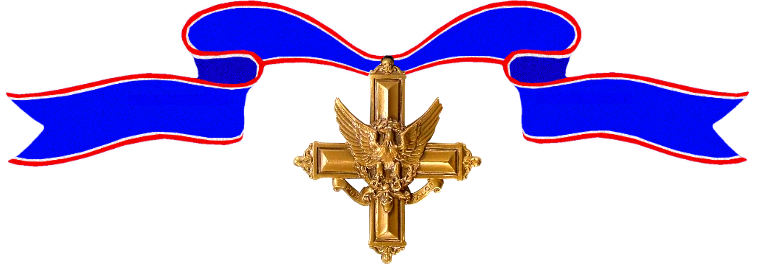The President of the United States of America, authorized by Act of Congress, July 9, 1918, takes pride in presenting the Distinguished Service Cross (Posthumously) to Captain (Infantry) Edward Lawrence Wells, United States Army, for extraordinary heroism in action while serving with 2d Machine-Gun Battalion, 1st Division, American Expeditionary Forces, near Buzancy, France, 21 July 1918. When the advancing lines were checked by the fire of numerous enemy machine gun, Lieutenant Wells skillfully directed the placing of one of his machine guns and silenced the hostile guns. While the line was being consolidated this officer, with another, reconnoitered beyond the left flank, which was being swept by enfilading fire. Locating a German machine gun, he put it out of action by well-=aimed shots from a rifle which he was then carrying. He then pushed on farther, accompanied by a soldier, captured a prisoner and discovered a nest of 8 enemy machine-guns located in a trench, whereupon with great daring he brought up a section of guns and opened up an annihilating fire which dispersed the enemy with many casualties.

Awards Received
-

Distinguished Service Cross
-
Distinguished Service Cross
Service:
United States ArmyRank:
Captain (Infantry)Batallion:
2d Machine-Gun BattalionDivision:
1st Division, American Expeditionary ForcesAction Date:
October 4, 1918
War Department, General Orders No. 53 (1920)The President of the United States of America, authorized by Act of Congress, July 9, 1918, takes pride in presenting a Bronze Oak Leaf Cluster in lieu of a Second Award of the Distinguished Service Cross (Posthumously) to Captain (Infantry) Edward L. Wells, United States Army, for extraordinary heroism in action while serving with 2d Machine-Gun Battalion, 1st Division, American Expeditionary Forces, near Exermont, France, 4 October 1918. When the attack was held up by heavy machine gun fire, Captain Wells volunteered for the mission and led a platoon of infantry, reinforced by four machine-guns, into Exermont. In spite of desperate resistance, he led the attack through the streets, capturing many prisoners and learning from one of these the approximate location of machine-guns on heights to the north, led the three remaining members of the command against these. Within 50 yards of the enemy emplacements, one of his men was killed and Captain Wells was mortally wounded, but he had succeeded in indicating to those in the rear the location of the hostile positions.

